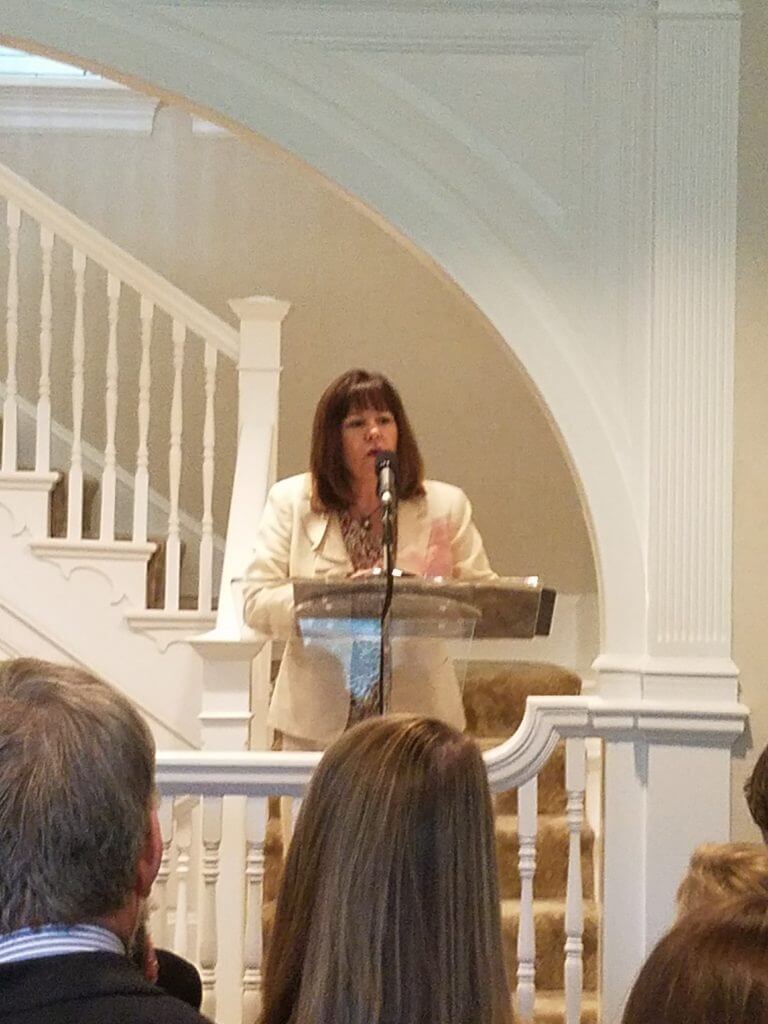By Bianca Strzalkowski

WASHINGTON, D.C. — Second Lady Karen Pence hosted an event this week for attendees of a summit on creative arts therapies for military patients.
The Creative Forces Clinical Research Summit, part of the National Endowment for the Arts (NEA) Military Healing Arts Network, is a collaborative effort that includes the Departments of Defense and Veteran Affairs, along with state agencies. The cohort serves “the unique and special needs of military patients and veterans who have been diagnosed with traumatic brain injury (TBI) and psychological health conditions (PTSD),” according to the NEA website. Mrs. Pence held the gathering at the Vice President Residence in Washington D.C. as a way to say thank you for the work of the participating therapists.
“Military service members and veterans deserve opportunities to heal from injuries sustained while fighting to protect our freedoms,” Mrs. Pence said. “I applaud the Creative Forces NEA Healing Arts Network for what they are doing to help us better understand the biological, psychological, behavioral, and economic impacts of creative arts therapies in integrative care settings for patients with traumatic brain injury and post-traumatic stress.”
NEA reports more than 500,000 service members and veterans currently live with TBI or PTSD. Experts say there are proven healing effects associated with providing patients with access to various types of art therapies — including music, creative writing, and dance. To date, there are 11 physical Creative Forces Clinical Sites and one telehealth location offering this type of therapy. Dr. Sara Kass, a retired Navy Captain who currently works with the NEA, says additional avenues exist for service members, veterans, and caregivers to find local programs.
“I would say step number one for anybody looking for resources is to contact in their own local community the military treatment facilities and case managers because they will know what the resources are locally,” she said.
There can sometimes be a misconception surrounding what art therapy is and is not, especially when first introducing the idea to the alpha personalities often found within the military. Dr. Kass explains that therapists eliminate that stereotype by connecting the dots of how this tool can best serve a patient’s needs.
“We actually find — and this is really about the therapist — the therapists are very good at approaching them where they’re at. There’s nothing that’s forced upon them in a way that makes them feel uncomfortable or threatened,” Kass said. “It’s about a therapist really learning who the patient is and identifying what it is that they want to get out of it.”
Sessions occur individually or in a group setting.
Art Therapy Program History
This program began roughly eight years ago in various phases, NEA Chairman Jane Chu said. The feedback she received reinforced the concept of a correlation between the arts and the healing of combat veterans.
“We’ve heard three components of comments. One from our service members … many of them originally went into it thinking it’s just an art project. But when they come out, they say their memory is more enhanced, they’re able to manage pain because they figured out the process — there’s a creation element to it,” she said.
Chu adds that family members and caregivers also remark that the therapy helps improve their loved one’s communication skills, and medical professionals say that the non-invasive process is much more cost effective, as well.
Mrs. Pence told AmeriForce Media in a previous interview that she plans to use her role to help elevate the profession of art therapy, while encouraging students to enter the field. She traveled this week to the United Nations in New York to further discuss these types of programs happening globally and within the United States. Read more about her work in the October issue of Military Families Magazine.
Current Creative Forces Clinical Sites:
- Joint Base Elmendorf-Richardson (JBER), Anchorage Alaska
- Marine Corps Base Camp Pendleton, Oceanside, Calif.
- Fort Carson, Colo.
- James A. Haley Veterans’ Hospital, Tampa, Fla.
- Fort Campbell, Ky.
- National Intrepid Center of Excellence (NICoE) at Walter Reed, Bethesda, Md.
- Marine Corps Base Camp Lejeune, Jacksonville, N.C.
- Fort Hood, Texas
- Fort Belvoir, Va
- Joint Expeditionary Base, Little Creek, Va.
- Madigan Army Medical Center, Tacoma, Wash.

